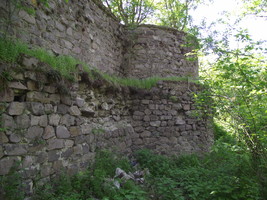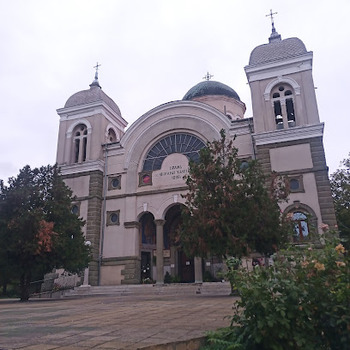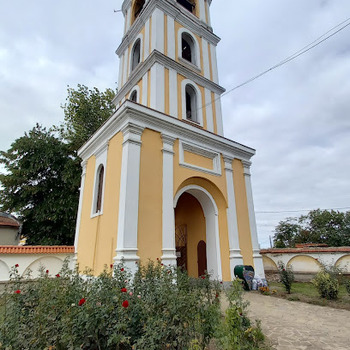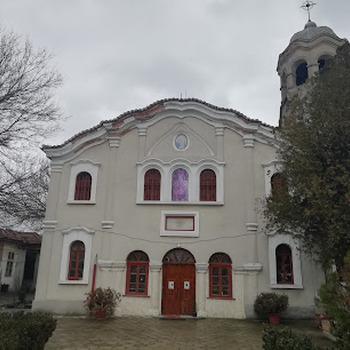Medieval fortress Sofularska mahala Yambol
Overview
In 1373, after a long and heroic defense, Yambol fell under Turkish rule. The Bulgarian population left after the siege was forced to live across the river and lived there for 505 years. The Bulgarian Kargon cemeteries, which have existed for the longest time, also appeared there.
In 1481 the so-called Sofular Mosque, on the foundations of a Christian church in the area of the fortress. "Noble saints of God are buried near it", above each of which there is an inscription with an exposition of his deeds and memorabilia - and their description would take us many words "wrote Evliya Chelebi in 1667 /p.82 /
During the construction of the building of the Technical High School "Ivan Raynov" most of these tombstones were pushed into the Tundzha River. During the concreting of the riverbed, the excavators removed some of them, and a very small part of them were brought to the museum and from there taken to the Kabile Archaeological Reserve.
Throughout the period of Ottoman slavery, the Turkish cemetery was located east of today's Stefan Karadja Street, under the Georgi Drazhev School, all the way to Borovets Hill. According to their customs, no more than one burial takes place in one grave. Many skeletons without grave goods were found.
At the beginning of the 16th century, Jews expelled from Spain settled in Yambol. They form the Jewish quarter in an area limited by the Synagogue / art gallery /, Targovska Street, Preslav Street and the arm of the Tundzha River.
Their cemetery is located in the park, where now is the rosary and the football field "G. Drazhev". Their tombstones, written in Hebrew, were found, some of which were stored in the museum. During the last reconstruction of the park, a tombstone was found again. After the liberation, they have a separate plot in the Yambol cemetery, located in the present-day area of the Kaufland store. In 1926, the idea arose from the Jewish community in the city to place a memorial sign in the park, but this idea was not realized.
In 1863, Ismail Haku Pasha, a large landowner from the village of Kabile, who owned 12,000 decares of land, built a mosque on the corner of today's Al. Stamboliyski Street and George Papazov Street. According to the memories of some residents of Yambol, disputed by others, he saved the city during the April Uprising, when Shefket Pasha aimed his cannons at Kargona in 1876.
He died at the age of 80 in 1876 and was buried in the mosque he built. During the construction of the Bulgarian Agricultural Bank in 1930 / today Bulbank /, the mosque was demolished and its remains were reburied in the lobby of the Eski Mosque. His merits for saving the city are recorded in three languages / Bulgarian, Turkish and French /.
In the buildings of the windows and some of the doors of the church "St. George" are built about 20 tombstones of deceased Yambol during the period 1730 - 1771 years. Constantin Irecek in 1884 paid attention to these plates. In 1969, museum specialists from the Stara Zagora Museum Dimitar Nikolov and Velichka Koycheva made attempts to decipher the inscriptions. They contain 40 male and female names. Among them are Stoyan, Penko, Zhelyazko, Karamfila and others. Many of the plaques depict handicraft tools showing the profession of burial. They were written in Greek, because at that time the Bulgarians were writhing and the church services were conducted in Greek. They are made of beautiful white marble, which shows that a rich population lived here.
Why and when were these tiles installed? Either they were used as building material or as a spiritual support for the church. In her book about the church "St. George" Dobrina Berova believes that this happened during the renovation of the church, which burned down during the Liberation in 1878. It is not clear whether these slabs were taken from the Cargon cemetery or were around the church. It has been a long time since their funeral and the deceased have no relatives or acquaintances. This may have happened after the mass exodus of Yambol in 1830. When historical and ancestral memory is interrupted. So they may have been built into the church during its great construction in 1835.
In 1862 Radi Kolesov was buried in the yard of the Holy Trinity Church in Kargona.
Recommended
- Bezisten-Yambol
- Museum of Military Glory
- Borovets Forest Park
- Bikov Bridge
- Ethnographic complex
- Church of St. Nicholas the Wonderworker
- Monument to the Cyclist and others


 Bulgarian
Bulgarian Romanian
Romanian



